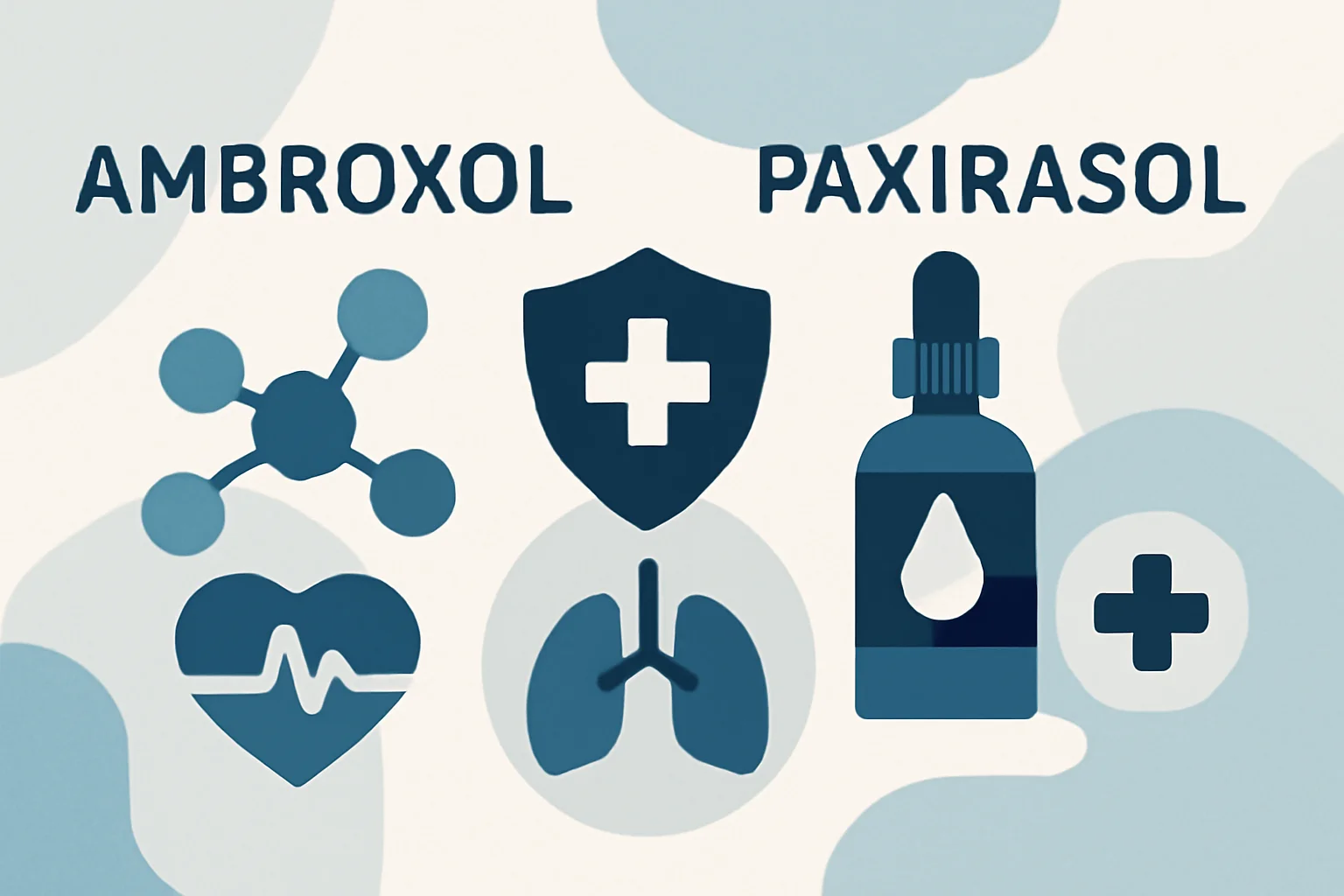
Ambroxol or Paxirasol: Which is the more effective choice?
The respiratory problems affect many people’s lives, and finding the right treatment is crucial for alleviating symptoms. Coughing, mucus production, and difficulty breathing are all symptoms that often occur with various respiratory illnesses. In medicine, there are several medications that can help manage these issues, among which two popular names arise: ambroxol and paxirasol. Both drugs work through different mechanisms and are used for different indications.
Ambroxol is known for its mucolytic effect, which helps dissolve and remove mucus, while paxirasol is more recognized for its cough suppressant properties. These medications not only serve to alleviate symptoms but can also contribute to treating the underlying causes of respiratory problems. However, choosing the right medication is an important decision that should be made based on medical considerations. Below, we will take a closer look at ambroxol and paxirasol to understand when and how to use these medications.
The mechanism of action and application of ambroxol
Ambroxol is a mucolytic medication used for treating cough and respiratory problems. It is popular mainly due to its effects on the mucous membranes of the airways. Ambroxol promotes the dissolution of mucus, thereby facilitating its clearance. It achieves this effect by reducing the viscosity of mucus, making it easier to expel from the airways. This can be particularly useful in conditions such as bronchitis, asthma, or COPD, where mucus accumulation is a common issue.
Ambroxol is available in various forms, such as syrup, tablet, and inhalation solution. The syrup is generally beneficial for both children and adults, as it is tasty and easy to take. The inhalation form can be particularly effective, delivering the active ingredient directly to the airways, where it exerts its beneficial effects. Ambroxol not only aids in the removal of mucus but also has anti-inflammatory properties that help reduce airway irritation.
Although ambroxol is generally well tolerated, as with any medication, side effects may occur. These can include nausea, diarrhea, or allergic reactions. It is important to use the medication as directed by a healthcare professional and according to the recommended dosage. Ambroxol is not recommended for certain health problems, such as severe liver or kidney diseases, so it is essential to consult with our doctor before starting treatment.
The role and effects of paxirasol
Paxirasol is a cough suppressant medication used to relieve various forms of coughing. It is primarily recommended for treating irritating coughs, which can be not only uncomfortable but also disruptive in daily life. The mechanism of action of paxirasol differs from that of ambroxol, as it does not focus on mucus dissolution but rather on inhibiting the cough reflex. This can help alleviate coughing, allowing for rest and recovery.
Paxirasol is generally available in syrup form, making it easy to take and quickly effective. Due to its efficacy, the medication is particularly popular in cases where coughing disrupts sleep or daily activities. It is important to note that paxirasol should not be used for extended periods, as coughing is a natural defense mechanism that helps clear the airways.
Like any medication, paxirasol also has side effects, which may include drowsiness, dizziness, or stomach upset. Therefore, it is especially important to use it as directed by a healthcare professional and according to the prescribed dosage. Additionally, paxirasol is not recommended for certain conditions, such as during pregnancy or breastfeeding, so it is always advisable to consult a doctor before starting treatment.
What is the difference between ambroxol and paxirasol?
Ambroxol and paxirasol are two different types of medications, and although both are used to treat respiratory problems, they have different mechanisms of action. Ambroxol focuses on dissolving and removing mucus through its mucolytic effect, while paxirasol aims to suppress coughing. This difference is key in choosing the appropriate medication, depending on the symptoms the patient is experiencing.
When making a choice, it is important to consider the patient’s condition and the nature of the symptoms. If the patient’s cough is associated with mucus accumulation, ambroxol may be more appropriate. Conversely, if the cough is irritating and disruptive, paxirasol may be the better choice. The combined use of both medications is also possible under medical supervision, allowing the patient to receive the best possible treatment.
It is important to note that for both medications, medical advice is essential, as selecting the appropriate treatment requires a personalized approach. Doctors take into account the patient’s health status, existing conditions, and potential drug interactions. Accurate diagnosis and treatment play a key role in the healing process.
In addition to medication use, lifestyle changes that can contribute to maintaining respiratory health should not be overlooked. Proper hydration, a smoke-free environment, and avoiding irritants can all help alleviate symptoms.
Note: The above information does not replace medical advice. In case of health problems, always consult your doctor, who can recommend the most appropriate treatment.

